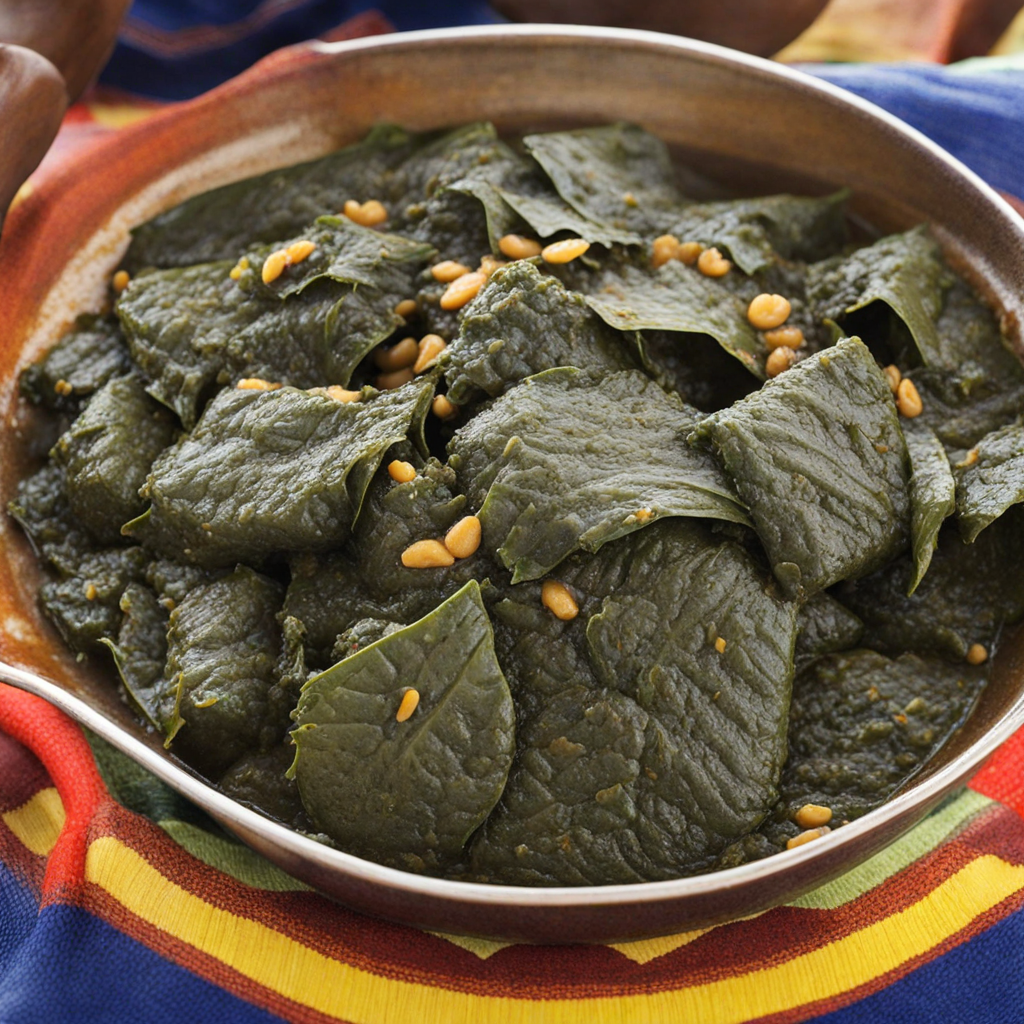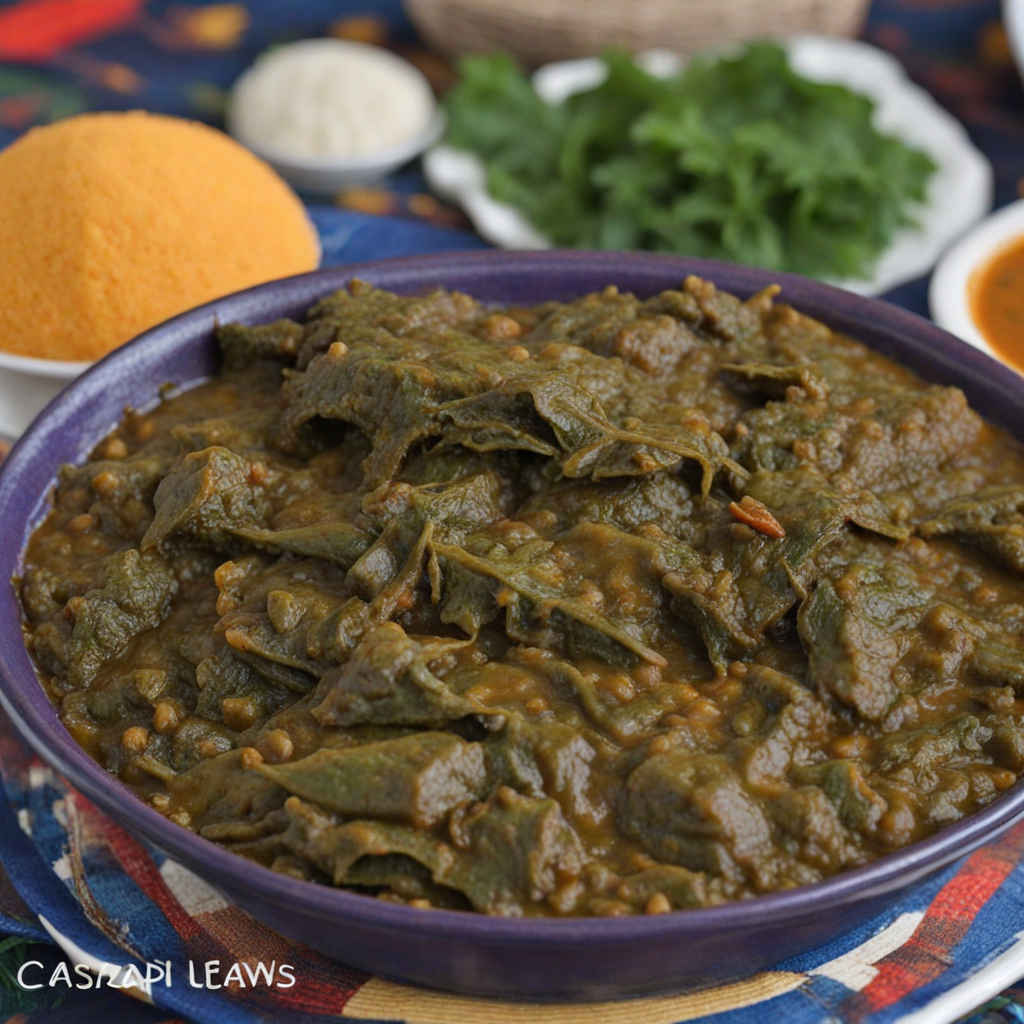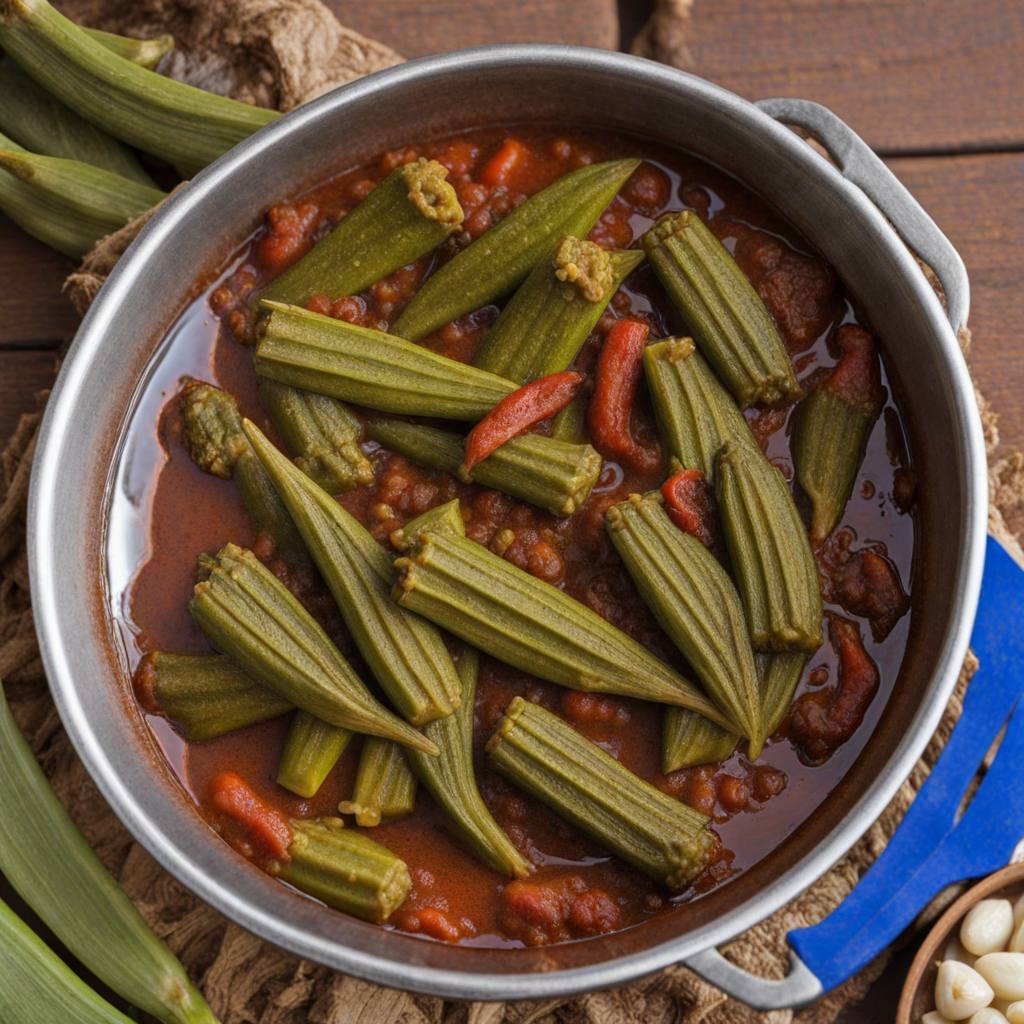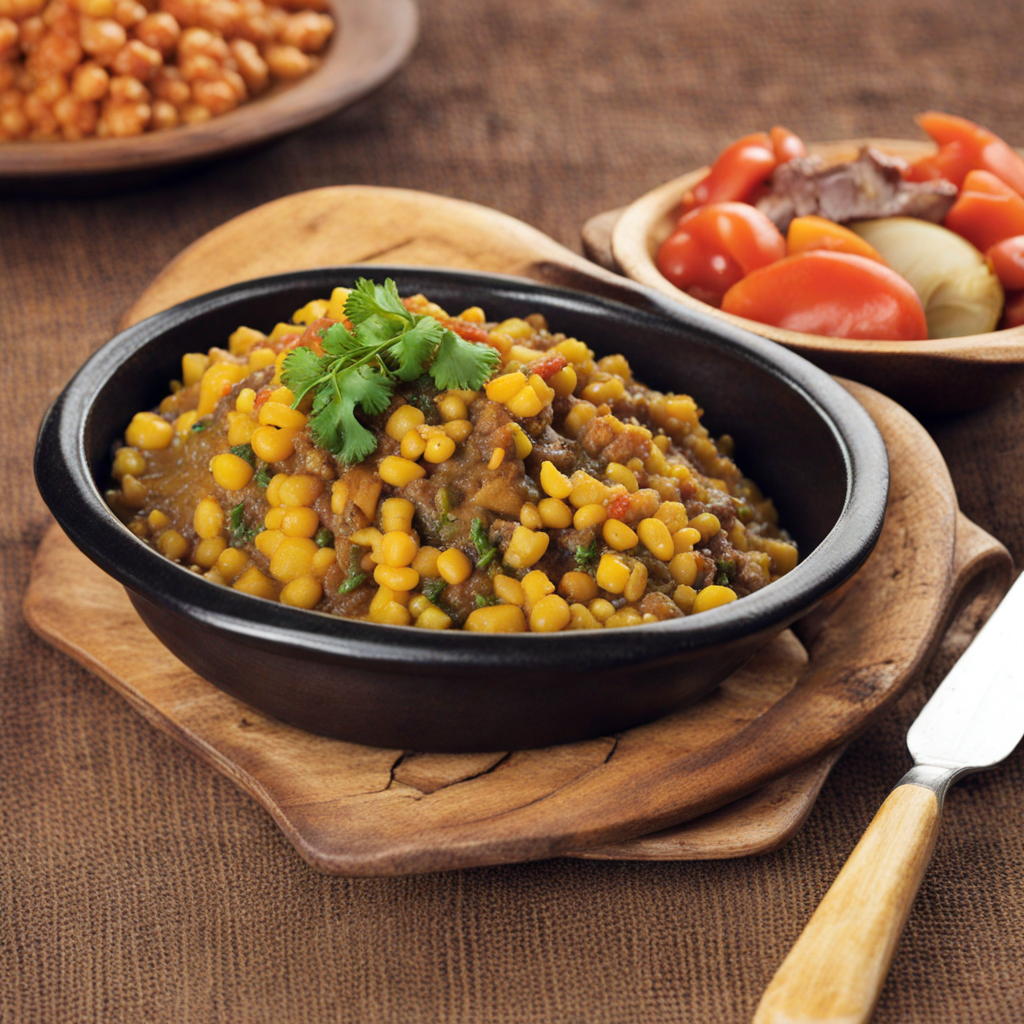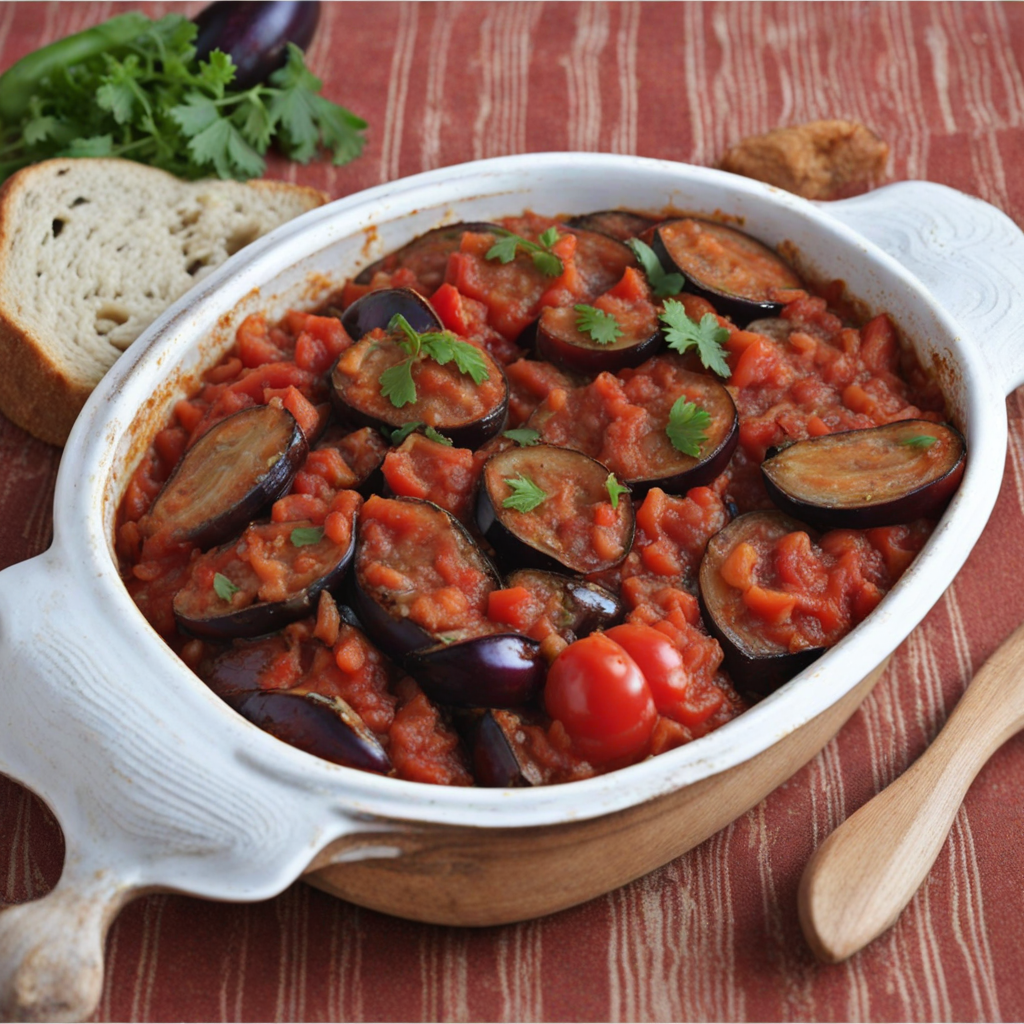Katapa
Katapa is a traditional Zambian dish that embodies the rich culinary heritage of the region, offering a delightful combination of flavors and textures. The core of Katapa consists of a thick porridge made from finely ground maize, which is a staple food in Zambia. This porridge is often enriched with a variety of ingredients, such as vegetables, spices, and sometimes meat or fish, to create a hearty meal that is both nutritious and satisfying. The dish is typically served warm, allowing the comforting aroma to envelop you as you prepare to dive into a unique culinary experience. One of the most notable aspects of Katapa is its versatility. Depending on the region and the cook's preferences, the dish can include an array of local greens, such as cassava leaves or pumpkin leaves, which are often sautéed with onions and tomatoes to enhance the flavor profile. The addition of these greens not only adds vibrant colors but also infuses the porridge with earthy and slightly bitter notes that beautifully balance the sweetness of the maize. Some variations might incorporate groundnuts (peanuts) or a hint of chili, delivering a subtle crunch and a mild heat that complements the overall dish. Katapa is more than just a meal; it represents community and tradition in Zambian culture. Often enjoyed during family gatherings or special occasions, it is typically served alongside grilled meats or fish, making for an unforgettable feast. The communal aspect of sharing this dish enhances its appeal, inviting diners to savor each bite while engaging in lively conversation. For those looking to explore new tastes, Katapa offers a delicious entry point into the flavors of Zambia, showcasing the country's commitment to using fresh, local ingredients in their cooking.
How It Became This Dish
The History of Katapa: A Culinary Gem of Zambia Katapa, a traditional Zambian dish, holds a special place in the culinary heritage of the nation. Renowned for its rich flavor and nutritional value, Katapa is more than just food; it represents a cultural identity and a celebration of Zambian traditions. To fully appreciate this dish, we must explore its origins, cultural significance, and its evolving role in Zambian society. Origins of Katapa The roots of Katapa can be traced back to the diverse agricultural practices of Zambia's various ethnic groups, particularly the Bemba, Tonga, and Lozi peoples. The primary ingredient in Katapa is usually cassava leaves, which are a staple in many parts of sub-Saharan Africa. Cassava, known scientifically as Manihot esculenta, is believed to have originated in South America and was introduced to Africa by Portuguese traders in the 16th century. Its adaptability to different climates allowed it to flourish, becoming a vital crop for many African nations, including Zambia. The preparation of Katapa traditionally involves cooking the cassava leaves with groundnuts (peanuts), spices, and sometimes fish or meat. The combination of these ingredients not only enhances the flavor but also provides a balance of carbohydrates, proteins, and essential fats, making it a nutritious meal for families. Cultural Significance Katapa is more than just a dish; it is an integral part of Zambian culture and social life. It is often served during communal gatherings, weddings, and festivals, where it symbolizes unity and togetherness. The preparation of Katapa can be a communal affair, with family members and friends coming together to prepare the meal, share stories, and strengthen bonds. This aspect of communal cooking reflects the broader Zambian cultural values of cooperation and community support. In many Zambian households, Katapa is often accompanied by nshima, a staple maize porridge that serves as the base of many meals. Together, they create a hearty and satisfying dish that is enjoyed by people of all ages. The pairing of Katapa with nshima also highlights the importance of maize in Zambian cuisine, as it is one of the country’s primary crops. Furthermore, Katapa carries historical significance as it has been consumed by generations, having withstood the test of time. It represents resilience and resourcefulness, traits that are deeply embedded in Zambian culture. The ability to utilize local ingredients and traditional cooking methods showcases the rich agricultural heritage of the country. Development Over Time As Zambia has evolved, so has the preparation and consumption of Katapa. In the past, the dish was primarily made using traditional methods, with families relying on their local produce and resources. However, with the advent of globalization and changing lifestyles, the ways in which Katapa is prepared and enjoyed have undergone significant transformations. In urban areas, the availability of processed foods has led to the introduction of new ingredients and cooking techniques. Some modern variations of Katapa may incorporate ingredients such as coconut milk or different spices, reflecting the influence of other culinary traditions. The proliferation of restaurants and food stalls serving traditional Zambian dishes has also introduced Katapa to a broader audience, making it more accessible to both locals and tourists. Despite these changes, the essence of Katapa remains intact. Many Zambians continue to value the dish for its nostalgic ties to their heritage. Home-cooked Katapa, made from freshly harvested cassava leaves and locally sourced ingredients, is still highly regarded and often prepared during special occasions. This connection to tradition is vital for preserving cultural identity, particularly in a rapidly modernizing world. Katapa Today Today, Katapa enjoys a resurgence in popularity as more people become aware of the importance of traditional foods in promoting health and well-being. Nutritionists emphasize the benefits of consuming locally sourced foods, and Katapa, rich in vitamins and minerals, fits into this narrative perfectly. The dish is also being embraced by younger generations who are keen to explore their culinary heritage while adapting it to modern tastes. Moreover, the growing trend of food tourism in Zambia has brought Katapa to the forefront. Tourists seeking authentic Zambian experiences often seek out traditional dishes like Katapa, eager to taste the flavors of the region. This interest has led to culinary festivals and events celebrating Zambian cuisine, providing a platform for local chefs and home cooks to showcase their skills and the cultural stories behind their dishes. In addition, the rise of social media has played a crucial role in promoting Katapa and other traditional dishes. Food bloggers and influencers share recipes, cooking tutorials, and personal stories related to Katapa, helping to educate a wider audience about its significance and preparation methods. This digital storytelling has fostered a sense of pride among Zambians, encouraging them to preserve and celebrate their culinary heritage. Conclusion Katapa is more than a mere dish; it is a vibrant tapestry of Zambian culture, history, and community. Its origins in the agricultural practices of various ethnic groups, combined with its cultural significance in social gatherings and its adaptability over time, illustrate the resilience and richness of Zambian cuisine. As the world becomes increasingly interconnected, dishes like Katapa remind us of the importance of preserving our culinary traditions while embracing innovation and change. In a world where fast food often overshadows traditional meals, Katapa stands as a testament to the enduring power of local ingredients, communal cooking, and cultural pride. Whether enjoyed in a bustling city restaurant or a quiet family home, Katapa continues to nourish both the body and the soul, a true culinary gem of Zambia.
You may like
Discover local flavors from Zambia


